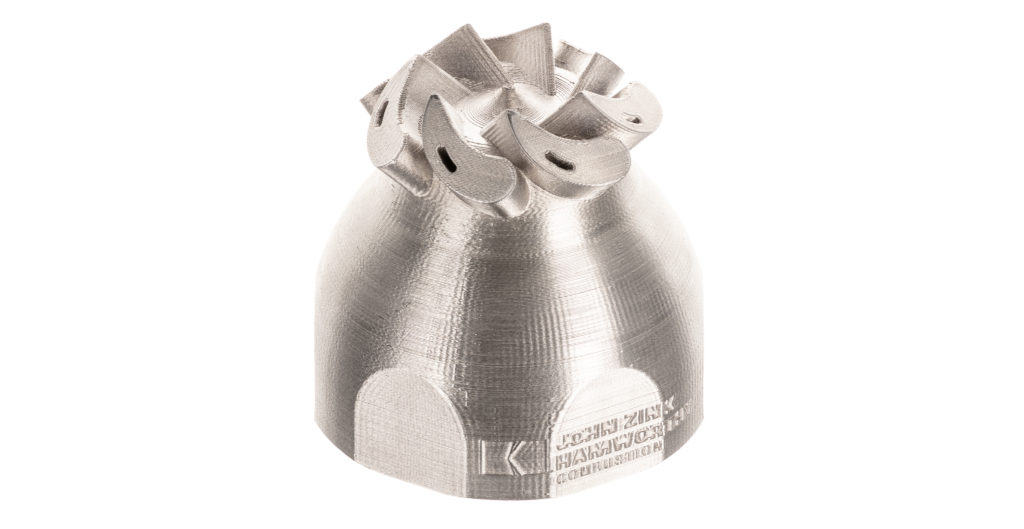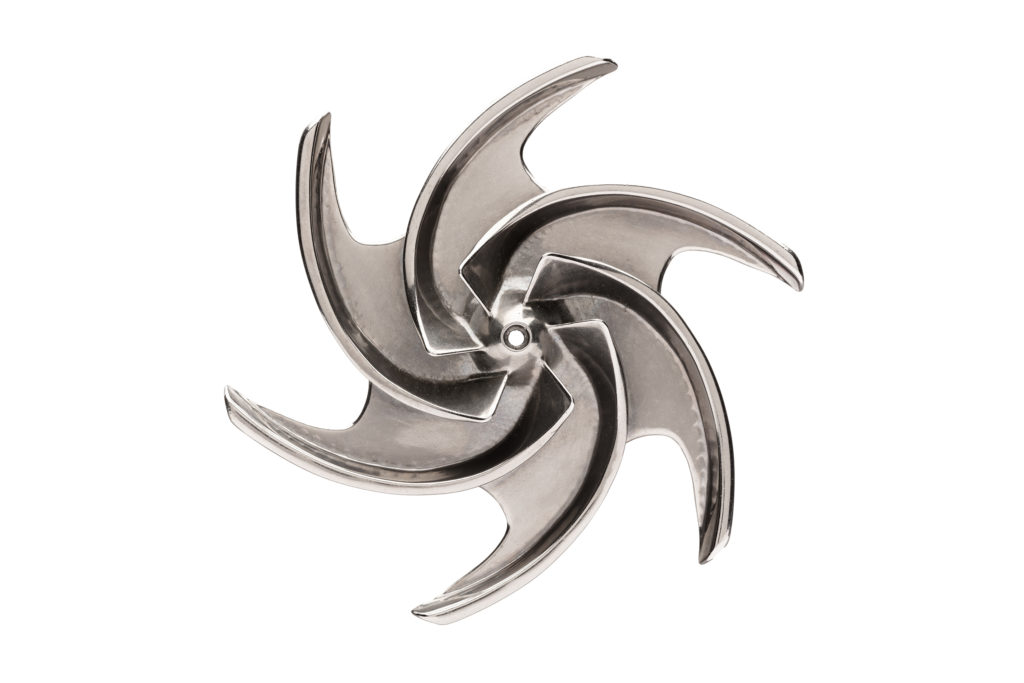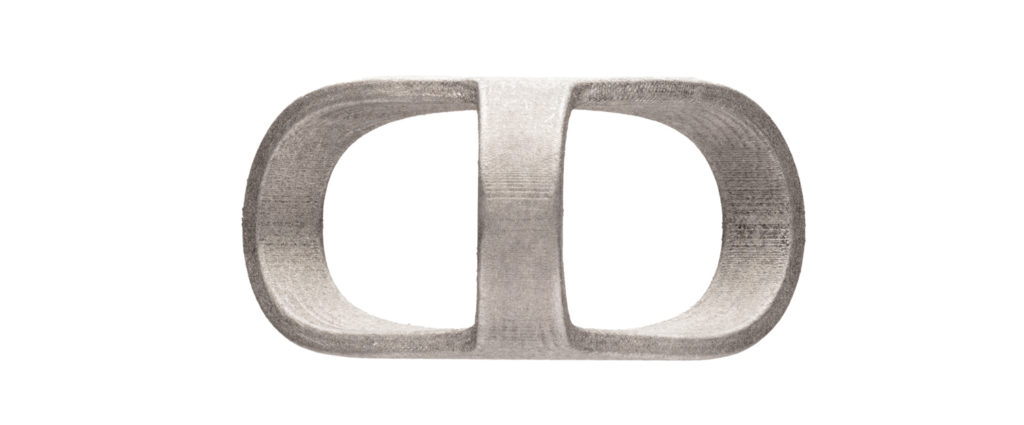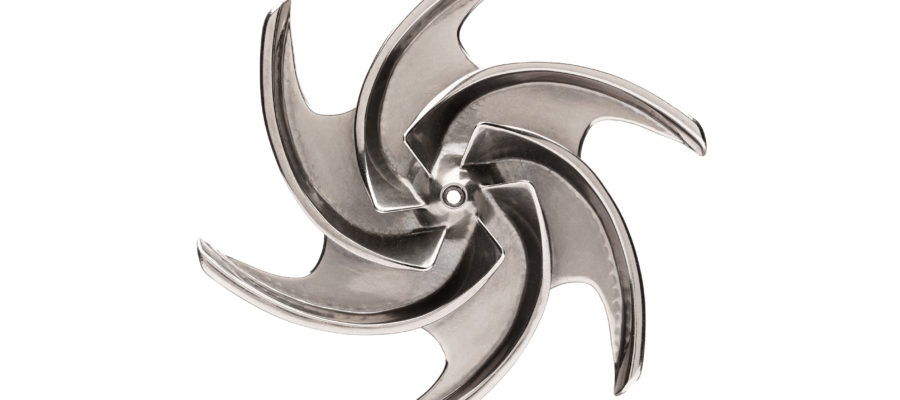Using 316L Stainless Steel for Metal 3D Printing
316L Stainless Steel is characterized by its good mechanical properties and corrosion resistance at both low and high temperatures. 316L is fully austenitic stainless steel and is now available to print with the Studio System by Desktop Metal.
About 316L Stainless Steel
Known for its excellent corrosion resistance, 316L is a molybdenum-bearing and fully-austenitic steel. This metal is resistant to pitting corrosion and has mechanical properties at both high and low temperatures. 316L is a widely used the material and can be found in a variety of applications, including:
- Food processing
- Medical devices
- Chemical and petrochemical processing
- Laboratory equipment
- Jewellery
- Marine
- Water treatment
- Petroleum refining
- Power generation
- Pulp and paper manufacturing
BMD™ + 316L
The combination of using 316L together with the Studio System’s Bound Metal Deposition (BMD), an extrusion-based metal 3D printing process, makes it simple for engineers and designers to print 316L parts as needed and on-demand in the comfort of their own office. Teams can perform efficiently on prototype pieces and produce intricate geometries that were not possible in the past with traditional methods of manufacturing. With these new capabilities, we are seeing cost-effective solutions for printing low volume parts that require the use of 316L.
APPLICATION EXAMPLE #1
Fuel nozzle by John Zink Hamworthy Combustion®

About the part:
The UHT nozzle is a fuel atomizer that is used with a medium, such as air or steam. Typically, it is installed in a HXG burner and then used on steam propulsion boilers on LNG tankers. The atomizer’s purpose is to improve the low load burner performance and this lets the burner run on lower fuel throughput, thereby reducing costs when the vessel is being used.
The nozzle has intricate internal channels and these channels are only achievable by using AM methods, however, laser methods can be very costly. Extrusion-based 3D metal printing method solves this issue as it allows for the production of complex channels in a cost-effective manner. In-house 3D metal printing the BMD is a fraction of the price ($130 with the Studio System vs. $1620 using third-party DMLS).
Why 316L?
316L has excellent mechanical properties and corrosion resistance at high temperatures- 316L is the most desirable material to be used for the fuel nozzle.
APPLICATION EXAMPLE #2
Impeller for harsh environments

About the part:
An integral part of pumps, impellers control the pressure of the pump and must be designed for its specific application. Impellers need to have geometrically intricate veins that allow for fluid to move through the pump. Because these veins are geometrically complex, they are difficult and expensive to manufacture- they require highly skilled labourers and expensive equipment.
Due to the latest technology, we are able to print 316L parts in-house and on-demand. Designers are able to produce functional prototypes quickly, and efficiently, whilst also using the same metal material that will be used for the final part. This process is also much cheaper than traditional methods- The cost of printing the impeller with the Studio System is about $70/part, compared to nearly $1000/part with third-party DMLS.
Why 316L?
Because impellers are needed environments that are rigorous (such as chemical pumps and salt water pumps, it is integral that they be corrosion resistant and have mechanical properties at a variety of temperatures. Therefore the use of 316L is imperative for these types of applications.
APPLICATION EXAMPLE #3
Medical finger splint

About the part:
The finger splint is a commonly used tool in the medical world- its main purpose is to limit the range of motion and/or immobilize a patients’ limb that has been injured. Traditionally, finger splints are made out of plastic through injection molding, however, this method limits customization and often breaks easily. Now, we have the ability to efficiently print a multitude of medical accessories that need to be customizable in shape and size to better attend to the needs of the patient wearing it.
Why 316L?
Metal splints that are printed with 316L are a better overall fit compared to splints that are manufactured out of plastic. 316L provides the product with better mechanical properties, more durability, an improved aesthetic finish, and stain resistance.
316L is available for printing parts with the Studio System and is one of the 6 core materials currently in development. Also in active development are 17-4PH (available now), Inconel 625, H13 tool steel, Copper, and AISI 4140.
